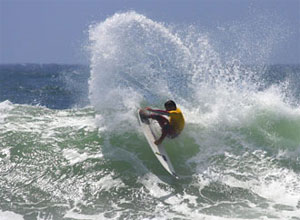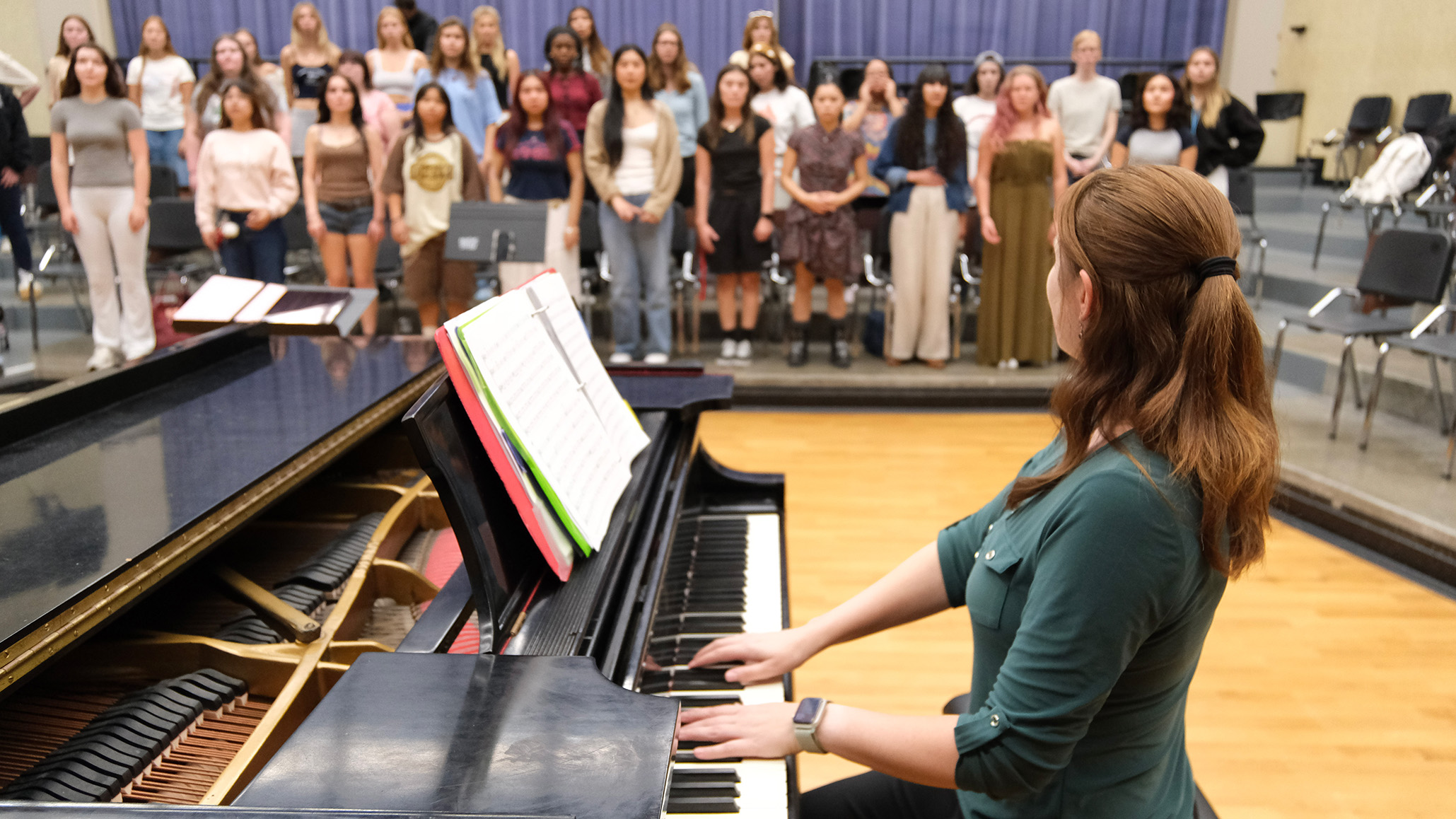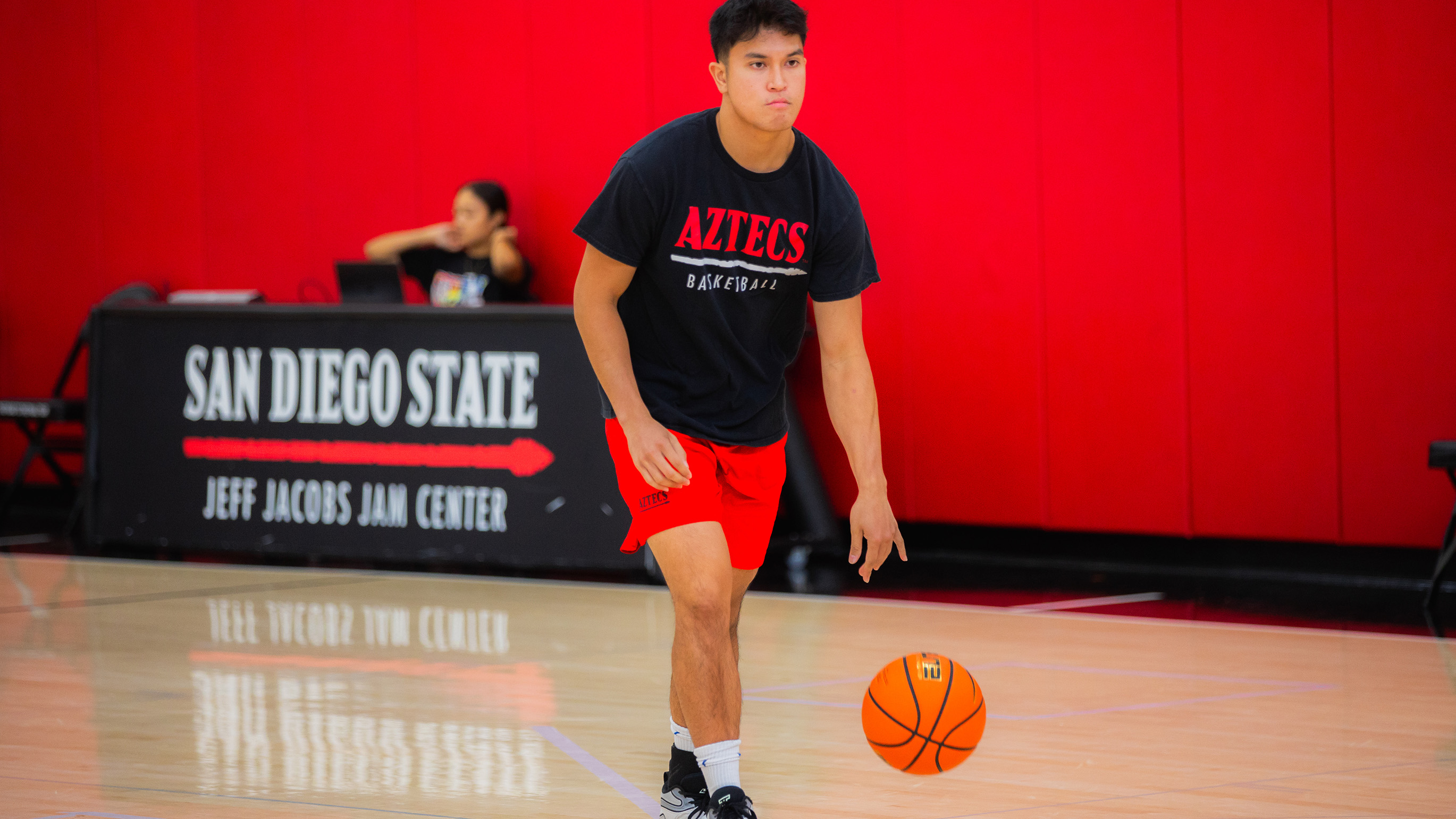Understanding the Surfer: Going Beyond the Break
SDSU Sociology Professor Michael Roberts helps his students understand the deep roots of popular surf culture.

It is a ritual performed by thousands of San Diegans every morning. They wake up early and drive to the beach, craving a chance to ride a perfect wave. Good surf or bad, they paddle out because that craving isn’t just a desire; it’s a need.
An energizing paddle gives way to calm as they sit outside the surf waiting for a wave. Like clockwork, the ocean rolls up in front of them and they begin to motion forward, stroke by stroke until the wave catches up and carries them.
Sometimes the wave closes out; sometimes they ride it to completion; sometimes they fall. In any case, they usually head back out for another. For some, if they catch only one wave all morning, that's not a concern. A surfer’s dedication to the sport goes beyond just the activity. It’s something they are drawn to -- a primal instinct.
“Surfing puts me at peace, it’s just me, the water and the board,” said Kevin Knets, who has been surfing since moving to San Diego to attend classes at SDSU three years ago. “In some ways, surfing helps me get through things, put what’s bothering me behind me.”
More than a wave
Understanding why Knets and others are so attracted to surfing is what inspired SDSU Sociology Professor Michael Roberts and his graduate student Chad Smith to create their new course “Sociology of Surfing.”
Applying a sociological perspective to surfing, an activity intrinsically linked with San Diego’s own culture, seemed like a perfect fit, said Roberts, a surfer himself for more than 20 years.
The SDSU Library even has one of the most comprehensive collections of surfing history and pop culture. The Surfing Collection features more than 400 books, photos, games and how-to guides that document the impact surf culture has had on Southern California.
For Roberts and Smith, what started as an idea to use a popular topic to get more students turned onto the discipline of sociology, ended up revealing a mysterious and unique lifestyle as deep as any culture studied under a sociological microscope.
The “Sociology of Surfing” examines the history of surfing as a framework to explain how the culture developed into an international lifestyle with its own slang, social structure, “laws,” music, industry and technology said to be enjoyed by an estimated 17 to 23 million people around the world.
“When surfing came to the U.S. from the Polynesian Islands and Hawaii, it took the form of a youth sub-culture,” Roberts said. “Now those youth are in their 50s and 60s and have turned their surfing habit into a huge worldwide industry.”
Meeting the mainland
When considering the origins of the surf culture, it’s important to look at two things: the history and culture of actual surfers and the history of the image of surfers in popular culture, Roberts said.
To explain the cultural perception of surfers today, Roberts and Smith look back to its origins in the Hawaiian and Polynesian islands.
In the 19th century, missionaries in Hawaii tried to put a stop to the practice of surfing because they believed it to be at odds with the so-called “Protestant work-ethic,” Roberts explained.
When surfing came to the mainland in the early 20th century, to places like San Onofre – just north of San Diego, the tug of war relationship between surfers and non-surfers continued.
Here in San Diego, where surfers are investment bankers, television reporters and even college professors, the idea that all surfers are simply “beach bums” is a misnomer and part of the baggage carried from surfing’s original collision with western culture.
“Surfers have always been ‘outsiders’ in some sense and their presence in society makes us look at things in our culture that we take for granted,” Roberts said.
What's the draw?
“When you take a look at surfing from the sociological perspective, it’s fascinating to see the influences that have formed our beliefs about the surfing culture,” said Smith, whose thesis focuses on the surf culture.
According to Roberts, the surf culture seems to be wildly attractive to non-surfers because of the dangerous or taboo aspect of the activity in relation to Western mores, which have their roots in traditional Hawaiian culture, but it is also a result of the way it was sold to the Western world and continues to be sold by Hollywood and the advertisers on Madison Avenue.
Although surf culture was in opposition to traditional Western culture, it was Westerners that used the laid-back, aloha-spirited surf mentality to make the Hawaiian Islands a popular tourist destination.
“The way the surfing lifestyle is portrayed capitalizes on the perceived casual and sexually charged attitudes it is linked with, stimulating traditional culture’s repressed desires,” Roberts said.
The idea of being out in the ocean and being “one” with nature is also largely responsible for the continued attraction to the sport.
“Surfers travel the boundary between culture and nature when they ride waves...”
— Michael Roberts
“Surfers travel the boundary between culture and nature when they ride waves, and the sight of surfing, let alone the activity, is irresistible because it draws attention to this boundary.”
As a result, surfers are also some of the most active environmentalists.
“When you’re a surfer, you can’t objectify the ocean,” said Kristen Lawler, professor of sociology at College of Mt. St. Vincent in Riverdale, N.Y. who was a guest lecturer in the class.
Freedom from the real world
In time, the Westernized surf image has come to represent “freedom” for many non-surfers, said Roberts. But for the population of actual surfers, it is mostly philosophical.
“Many surfers have told me that surfing is like therapy for them mainly because they seek a temporary respite from the pain they endure – the ‘drama’ so to speak – that stems from particular relationships and institutional confines we experience in society,” Roberts said.
For surfers in the class, it was an eye-opener to see that their connection to surfing was deeper than they realized.
“Students in the class who surf have come out understanding the sport and themselves in a whole new way,” Smith said.



